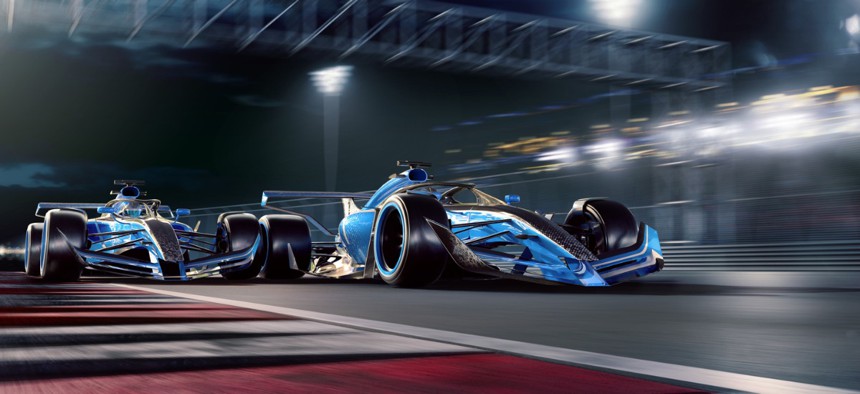Navy Beats Army in First Amazon-Led Competition to Produce the Fastest Self-Driving Race Cars

peepo/iStock.com
The program offers a hands-on machine-learning experience—and bragging rights.
Army and Navy teams recently competed against each other to generate the fastest machine learning-enabled self-driving racecar—and ultimately, to gain new technology-centered skills along the way.
Amazon Web Services this week announced the results of the two-part AWS DeepRacer contest between Army Communications-Electronics Command and the Naval Information Warfare Center-Atlantic teams that culminated in a race where the top performers’ models were uploaded to miniature autonomous vehicles that zipped around a physical track.
“We’ve heard from our [Defense Department] customers that they are interested in learning more about cloud-based robotics and machine learning,” AWS Director for Artificial Intelligence Devices Mike Miller told Nextgov in an email. “We worked backwards from that customer interest to organize an AWS DeepRacer competition, which provided a hands-on way to experience machine learning.”
The competition kicked off with teams attending a workshop and receiving hands-on tutorials encompassing machine-learning basics. They produced their own reinforcement learning models, which in this case help train the car to operate on the racetrack.
The models were refined and then tested in simulation.
“Reinforcement learning has many applications. The most well-known example is self-driving cars,” Miller explained. “This particular machine-learning method doesn’t require pre-existing training data for the algorithm to learn from, and you can think of it like an agent learning from its environment.”
With support from the AWS RoboMaker, the teams can essentially simulate tactical-edge locations and have the agent learn through trial and error in safety. The cars involved learn through an award system how to best operate in their environment.
Of the 36 racers who participated in the inaugural competition, the top seven from the Army were selected as semifinalists to compete against the top seven from the Navy. After their models were trained in that simulated environment powered by Amazon’s tools, they were loaded by an in-person pit crew onto the 1/18th scale AWS DeepRacer racecars. The reinforcement learning algorithms would then guide those smart vehicles locally on the physical track, with intent to achieve the quickest time.
Hundreds of people across the country tuned into the live-streamed competition.
“The energy level was actually amazing up to and including the finals,” Miller said. “[W]hile it was still a competition, the comradery, even virtually, was apparent. There was a consistent conversation between competitor teams, but the chat also included a great deal of questions from non-participants who were learning the ropes for future races.”
In the end, Navy Team DeepBlueSea took home the golden trophy, with a winning time of 7.112 seconds.
Plans are already underway for the next competition.
Editor’s note: This article was updated to clarify which organizations the service teams represented.
NEXT STORY: Automatic Government






